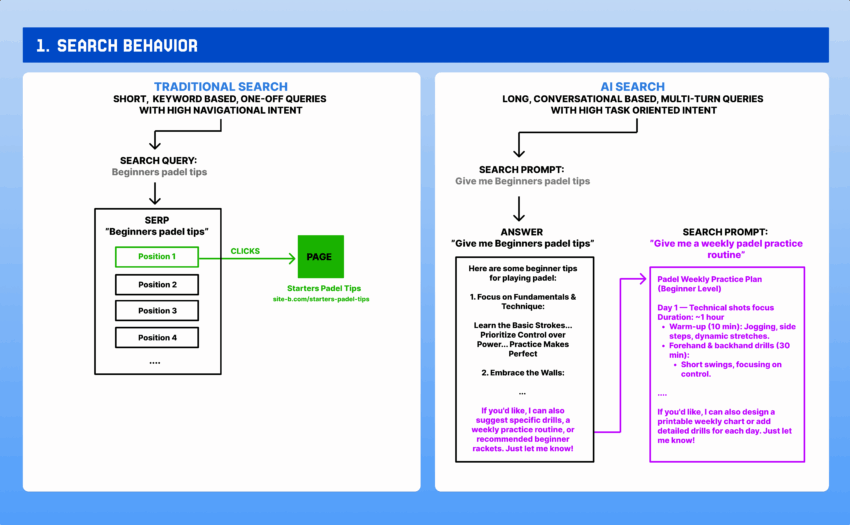TL;DR Summary of Key Differences Between Traditional and AI Search for Marketers
Optimixed’s Overview: How AI Search Transforms Search Marketing Compared to Traditional Methods
Understanding Search Behavior Differences
Traditional search engines primarily respond to short, keyword-driven, one-off queries that often have a navigational intent—users seek specific websites or pages. In contrast, AI-powered search supports long, conversational, multi-turn queries with task-oriented intent, enabling users to engage in dynamic interactions to fulfill complex goals.
Query Handling and Matching
- Traditional Search: Matches individual queries with corresponding pages directly.
- AI Search: Employs a query fan-out approach, breaking down a user query into multiple sub-queries to find more nuanced and relevant information chunks.
Optimization Targets Shift
While traditional SEO focuses on page-level relevance, AI search optimization requires attention to passage or chunk-level relevance. This means marketers must optimize specific sections of content to align with AI’s finer-grained understanding.
Differences in Results Presentation
- Traditional Search: Delivers a ranked list of multiple linked web pages, encouraging users to explore various sources.
- AI Search: Provides a single, synthesized answer that integrates information from multiple sources, with secondary links for deeper exploration.
These distinctions highlight the evolving landscape of search marketing, urging professionals to adapt strategies toward conversational content, detailed passage optimization, and understanding AI-driven result formats.
